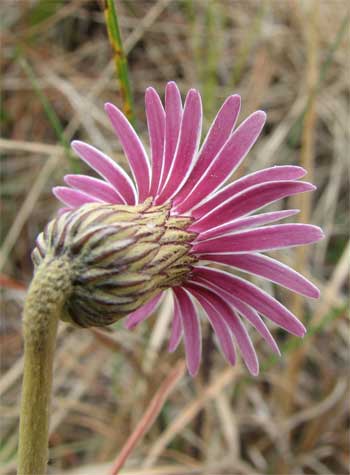
Flora Columnist
Though spring is late this year, I’m already on visual overload. In our joy, bordering on lust, for beautiful urban and residential garden-making, we humans have managed to achieve so much color, so much effect from massive plantings and so many collections of horticultural selections that I often feel the senses simply cannot absorb it all.
It takes a simple stroll through Carrboro’s downtown residential area to admire creative gardens, right out along the street front, for all to celebrate and enjoy. The upcoming Chapel Hill Garden Club Spring Garden Tour provides more opportunity to view unbelievable gardening achievements.
How one selects to see and enjoy a garden is, of course, a personal taste.
I find myself so blinded by the borders and masses of color and brilliant accents of specimen plants that I seek respite along a shady forested streamside path. While enjoying the brilliance of human-created gardens we must remember to take the time to seek out the subtle beauty of natural gardens near and far.
It was a relief to abandon urban landscapes this past Saturday to enjoy discovering the subtle beauties of the trails through the forests surrounding Rock Cliff Farm, the retirement homestead of B.W. Wells now protected within the Falls Lake State Recreation Area. Way back in 1932, Dr. Wells (The Natural Gardens of North Carolina) described our state’s plant communities as a progression of beautiful natural gardens reaching from the coastal dune communities all the way to “Christmas tree land†on the Carolina mountaintops.
There are dozens of these natural gardens scattered in and around our local communities; the best way to gain access is to participate in the numerous seasonal wildflower and ecology walks sponsored by local conservation organizations such as Triangle Land Conservancy, the Eno River Association and Friends of Bolin Creek. In addition, institutions like the N.C. Botanical Garden and Duke Gardens offer field trips to natural areas in other regions of the state.
You may want to note that the Museum of Natural Sciences (naturalsciences.org) is repeating an exciting weekend field study trip on April 23-25. Following in the footsteps of B.W. Wells, the journey to the coast will visit some of the special sites that he studied during his botany career. Along the fast-traveled highways, participants will stop to discover distinctive plant communities, including Carolina bays and pocosins, sand ridges with elfin oak forests and towering longleaf pine savannahs, home of the famous Venus flytrap, pitcher plants, sunbonnets, the rare red-cockaded woodpecker and the beautiful scarlet king snake, which is easily spotted if you know where to look.
So, in addition to enjoying easily accessible urban gardens, make the effort to support and stay in touch with the numerous conservation groups in the area and across the state to gain access and a first-hand appreciation of North Carolina’s natural gardens.


